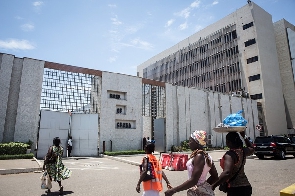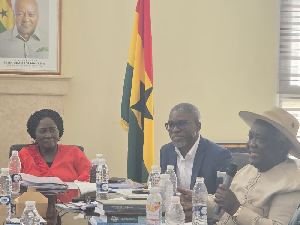After showing a marked reluctance to lend during the second quarter of the year in particular, due to the economic slump imposed on Ghana by the COVID-19 pandemic, commercial banks are gradually recovering their willingness to lend to needy customers.
The Bank of Ghana’s most recent credit conditions survey, conducted during the third quarter of the year suggested that banks were getting ready to ease their credit stance going forward and bankers now affirm that this is precisely what is happening.
Actually, bank lending to the private sector during the first half of 2020 was more than for the corresponding period of 2019 although was largely because last year banks were unusually cautious about booking new loans, even by their customarily conservative standards, having just finished writing off some GHc4 billion in under-performing loans as part of the recent financial sector reforms instituted by the central bank.
But a large part of this year’s new lending has been part of the restructuring of existing loans in response to the challenges their borrowing customers have faced because of the pandemic and the requisite public policy responses imposed to contain its spread.
Now however, the banks are becoming more willing to book entirely new loans as they look to benefit from the economic rebound that has started following an unprecedented 3.4 percent economic contraction suffered during the second quarter of the year.
Bankers are giving several reasons for their easing of their credit stance.
First of course are the sheer opportunities being thrown up by an economy now striving to return to full capacity after virtually shutting down in April.
The return of consumer confidence to pre-lockdown levels means sharply rising consumer demand and producers and traders alike seeking to meet that demand need financing.
Secondly, short term treasury bill rates have fallen over the past six months – even though government’s demand for fiscal deficit financing has risen sharply – in response to deliberate monetary easing by the BoG.
At the same time, effective lending rates are rising again as banks claim a return to normality and thus the ending of their application of a 200 basis points cut in rates charged on new loans.
This means that although base lending rates – as determined by the Ghana Reference Rate – remains at a low of just over 15 percent, banks are being allowed wider spreads to compensate for credit risks.
Indeed, the real risk premium between treasury bill rates and lending to customers is now wider than at any time over the past couple of years.
Banks are increasingly willing to take those risks to reap that premium. Bank shareholders, having had to put up major new equity capital to meet the new GH¢400 million minimum capital requirement need more interest earnings than ever before to keep close to the customary average returns on equity than the industry has produced of over 20 percent; and with treasury yields lower than at any time in more than any time in nearly a decade, new lending to private sector customers has become necessary to keep them happy.
All this means banks are beginning to open the credit taps again, although the full effects are yet to show up. Nevertheless, borrowing customers are already beginning to see their banks treat their credit requests with attitudes similar to those pre-lockdowns. The COVID-19 instigated credit crunch is finally coming to an end.
Business News of Thursday, 22 October 2020
Source: goldstreetbusiness.com













